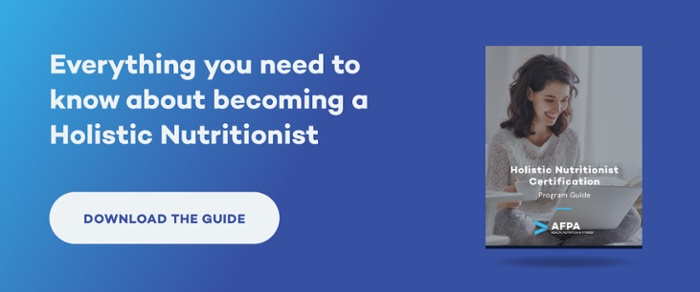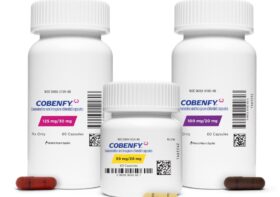Guide to Nootropics & Adaptogens: Differences & Similarities

In our quest for optimal health and peak performance, we often turn to nature for solutions. Among the myriad of options, two categories of natural substances in particular have gained traction in the wellness world: nootropics and adaptogens. While these terms may sound esoteric, they represent classes of substances that can enhance cognitive function and help the body adapt to stress.
However, with the wide variety of options available, it can be difficult to navigate these fields and understand what nootropics and adaptogens really are, how they differ, and how they might complement each other. Additionally, as is the case with any health intervention, it’s crucial to select the right botanical based on your individual needs, health status, and lifestyle, and in consultation with healthcare professionals.
In this quick guide, we delve into the worlds of nootropics and adaptogens, exploring their differences and similarities. We will also provide practical advice on selecting the right botanical for your unique needs. Whether you are a health and wellness coach or AFPA-Certified Holistic Nutritionist working with clients, a student in the field, or an individual interested in optimizing your health, this guide will provide valuable insights to help you stay informed about the use of nootropics and adaptogens.
Learn How to Become a Certified Holistic Nutritionist in Less Than 6 Months
What Are Nootropics?
Nootropics, also known as “smart drugs” or “cognitive enhancers”, are natural or synthetic substances that can enhance cognitive functions, including memory, creativity, motivation, and executive functions such as attention and cognitive control. These substances have gained notable popularity over the years due to their potential to optimize human cognitive capabilities beyond one’s natural capacity.
The term “nootropic” was first coined by Corneliu E. Giurgea, a Romanian psychologist and chemist, in 1972. According to Giurgea, for a substance to be considered a nootropic, it must meet five specific criteria: enhance learning and memory, increase the resistance of learned behaviors/memories to conditions that tend to disrupt them, protect the brain against physical or chemical injuries, increase the efficacy of tonic cortical/subcortical control mechanisms, lack typical pharmacology of psychotropic drugs, and have few side effects plus extremely low toxicity.
Nootropics can be broadly classified into three categories: dietary supplements, synthetic compounds, and prescription drugs. Dietary supplements include substances like caffeine, L-theanine, and omega-3 fatty acids; synthetic compounds include substances like racetams and modafinil; prescription drugs include substances like Adderall and Ritalin, which are usually prescribed for conditions such as ADHD. It’s crucial to note that the efficacy of nootropics can vary greatly depending on several factors, including the specific substance used, dosage, duration of use, and the individual’s unique physiology.
While nootropics may hold the potential to enhance cognitive functions, the use of such substances should be approached with caution. Despite their increasing popularity, rigorous scientific studies on the long-term effects of most nootropics are still limited. Therefore, their safety profile is not entirely clear.
What Are Adaptogens?
Adaptogens are a unique class of plants and herbs that are believed to help the body resist different types of stressors, be they physical, chemical, or biological. The concept originates from traditional herbal medicine and has roots in Ayurvedic and Chinese medicine systems.
The term “adaptogen” was first introduced by Russian toxicologist N.V. Lazarev in 1947, who defined these substances as agents that increase the “state of non-specific resistance” to stress. Adaptogens work by modulating our body’s stress response system, the hypothalamic-pituitary-adrenal (HPA) axis, and the sympathoadrenal system (SAS). They balance the body’s physiological processes, helping it return to homeostasis after being disturbed by stress.
Examples of adaptogens include ashwagandha, Rhodiola rosea, ginseng, and holy basil, among others. These plants are known for their calming, energizing, and immune-boosting properties. It’s crucial to note that not all herbs or plants are adaptogens. To be categorized as an adaptogen, an herb must be non-toxic, produce a non-specific response in the body that increases resistance to a broad spectrum of harmful factors (stressors), and help to balance physiological functions.
Research has shown that adaptogens can have several beneficial effects, including combating fatigue, enhancing mental performance, easing depression and anxiety, and helping to prevent or reduce stress-induced disorders and diseases. However, while the evidence is promising, more research is needed to fully understand the exact mechanisms of how adaptogens work in the body and to confirm their long-term effects and safety.
Nootropics vs. Adaptogens: Differences and Similarities
How Nootropics Are Different from Adaptogens
While nootropics and adaptogens both impact the body’s physiology and can offer potential benefits to our health and wellbeing, they differ significantly in their primary functions and mechanisms of action.
- Primary Functions: Nootropics primarily aim to enhance cognitive abilities such as memory, focus, creativity, and motivation. Adaptogens, on the other hand, primarily work to increase the body’s resistance to stress and promote balance in the body’s physiological systems.
- Mechanisms of Action: The mechanisms of action of nootropics and adaptogens are different. Nootropics may work by altering the availability of the brain’s supply of neurochemicals (neurotransmitters, enzymes, and hormones), by improving the brain’s oxygen supply, or by stimulating nerve growth. Adaptogens, in contrast, exert a stress-protective effect by regulating the body’s stress response systems, the HPA axis and SAS, to maintain homeostasis.
- Scope of Effect: Nootropics are typically used for their acute effects on cognitive enhancement. Their benefits are usually felt shortly after consumption and can vary depending on the specific substance used and the individual’s unique physiology. Adaptogens, on the other hand, are known for their long-term benefits and are generally used over extended periods to build resilience to stress, improve energy, and support overall well-being.
- Specificity of Effect: Many nootropics have targeted and specific effects on cognitive function. For instance, some may enhance memory, while others may improve focus or creativity. In contrast, adaptogens have a non-specific effect, meaning they work broadly to increase the body’s resistance to a range of stressors and promote overall balance in the body.
How Nootropics Are Similar to Adaptogens
While nootropics and adaptogens have different primary functions and mechanisms of action, there are several areas in which they share similarities.
- Aim to Improve Human Performance: Both nootropics and adaptogens are used with the primary goal of improving human performance. Nootropics aim to enhance cognitive functions, while adaptogens focus on bolstering the body’s resistance to various stressors. However, the end goal is the same: to optimize human health and performance.
- Influence on Neurochemical Processes: Both nootropics and adaptogens can influence neurochemical processes in the brain. Nootropics often function by altering the availability of neurochemicals, including neurotransmitters, enzymes, and hormones, and by improving the brain’s oxygen supply. Adaptogens can also influence neurochemical activity as part of their stress-protective effect, including influencing the production of stress hormones.
- Use of Natural and Synthetic Substances: Both nootropics and adaptogens can be derived from natural or synthetic substances. For instance, nootropics can include natural substances like caffeine or L-theanine, as well as synthetic substances like modafinil. Similarly, adaptogens primarily comprise natural herbs and plants like ashwagandha and Rhodiola rosea, but there are also synthesized versions.
- Safety and Efficacy Considerations: For both nootropics and adaptogens, safety and efficacy can vary greatly, depending on the specific substance used and the individual’s unique physiology. Further, both nootropics and adaptogens require more scientific study to fully understand their long-term effects, optimal dosages, and potential side effects or contraindications.
Which Botanicals Are Both Nootropics and Adaptogens?
Several botanicals exhibit both nootropic and adaptogenic properties due to their complex phytochemical compositions and multifaceted actions on human physiology. Below are five of the most well-known botanical that are both nootropics and adaptogens.
- Ashwagandha (Withania somnifera): Ashwagandha is a renowned adaptogen traditionally used in Ayurvedic medicine to help the body resist physical and mental stressors. In addition to these adaptogenic properties, ashwagandha has also shown promise as a nootropic, with studies suggesting that it can enhance memory, improve reaction time, and increase cognitive capacity.
- Rhodiola rosea: Known for its adaptogenic effects, Rhodiola rosea can help the body adapt to and resist various stressors. It also exhibits nootropic properties, as it can enhance cognitive function and reduce mental fatigue. Research suggests that Rhodiola rosea can improve performance on work-related tasks during periods of fatigue and stress.
- Bacopa monnieri: Bacopa monnieri, a staple herb in Ayurveda, is known for its cognitive-enhancing effects. It exhibits nootropic properties, such as improving memory and cognitive function, especially in older adults. Furthermore, Bacopa monnieri is also considered an adaptogen because it helps the body adapt to stress and protects the brain from the damaging effects of stress.
- Ginseng (Panax ginseng): Ginseng is one of the most well-known adaptogens, used to increase the body’s resistance to stress. It also exhibits nootropic properties, enhancing memory and cognitive performance in some studies.
- Lion’s Mane (Hericium erinaceus): Lion’s mane is a mushroom used in traditional Chinese medicine with nootropic properties, including the enhancement of cognitive function and nerve growth factor (NGF) production. While not commonly referred to as an adaptogen, lion’s mane has shown potential in modulating the body’s stress response, suggesting possible adaptogenic activity.
Selecting the Right Botanical: Nootropics and Adaptogens
Choosing the right botanical, whether it’s a nootropic or adaptogen, depends on your individual needs, lifestyle, and overall health. Here are some factors to consider when selecting the right botanical:
- Personal Goals: Your health goals can guide your choice. If you are seeking cognitive enhancement, such as better memory or increased focus, you may want to consider nootropics like Bacopa monnieri or Panax ginseng. If you aim to increase your body’s resistance to stress and promote overall balance, adaptogens such as Rhodiola rosea or ashwagandha could be helpful.
- Health Status: Your overall health status plays a critical role in the selection process. Certain botanicals may interact with existing health conditions or may not be suitable if you’re pregnant, nursing, or have a chronic illness. For example, some botanicals may increase blood pressure or interfere with blood sugar control.
- Medication Interactions: Botanicals, like any other substance you ingest, have the potential to interact with prescription or over-the-counter medications. It’s essential to discuss any botanicals you are considering with your healthcare provider to avoid potential interactions.
- Quality of the Botanical: The market is filled with a wide range of products, and not all are created equal. Look for high-quality botanicals from reputable brands. It’s advisable to opt for products that are independently tested for purity and potency.
- Possible Side Effects: Every botanical has the potential for side effects. Pay close attention to how your body reacts when you start taking a new botanical. If you experience any discomfort, stop using the product and consult your healthcare provider.
- Dosage and Administration: Each botanical has recommended dosages that should not be exceeded. Also, the timing and method of administration (e.g., with or without food) can impact the effectiveness of the botanical.
Given the complexity and personal nature of these decisions, it may be beneficial to consult with a botanical specialist. This could be a registered herbalist, naturopathic doctor, traditional Chinese medicine practitioner, or Ayurvedic practitioner, among others. These professionals have specialized knowledge in the use of botanicals and can provide personalized advice based on your unique needs and circumstances.
It’s important to note that if you have any health issues, are taking medication, or experience unusual symptoms after taking a botanical, always consult with your physician. The use of botanicals should be a part of an overall health plan supervised by a healthcare provider.
Remember, your health and well-being are paramount, and the purpose of using botanicals is to support, not undermine, your health. So take the time to do your research, consult with professionals, and listen to your body.
Main Takeaways
In our exploration of nootropics and adaptogens, we have uncovered a fascinating world of botanicals that can potentially enhance our cognitive capabilities and help us adapt to stress. Nootropics, substances that can improve cognitive function, and adaptogens, natural substances that help the body adapt to stress, offer promising benefits for both mental and physical health.
While these two classes of substances may share some similarities, they also have key differences. Nootropics primarily aim to enhance brain function, while adaptogens exert their effects by supporting the body’s ability to cope with stress. However, some botanicals, such as ashwagandha, Rhodiola rosea, Bacopa monnieri, ginseng, and lion’s mane, possess both nootropic and adaptogenic properties, providing a bridge between these two categories.
When selecting the right botanical, it is crucial to consider personal health goals, current health status, potential interactions with medications, the quality of the botanical product, possible side effects, and the recommended dosage. It can also be helpful to consult with a botanical specialist, such as a registered herbalist, naturopathic doctor, or Ayurvedic practitioner, for personalized advice. Always remember to consult with your physician if you have any health issues, are taking medication, or notice any unusual effects after taking a botanical. As an AFPA-Certfied Health and Wellness Coach, remember your scope of practice when working with clients.
By understanding these unique classes of substances and applying thoughtful selection processes, we can leverage the benefits of both nootropics and adaptogens as part of an integrative approach to health and wellness. As we continue to explore and learn about these natural allies, we open up new possibilities for supporting our health, well-being, and performance.
References
- https://www.ncbi.nlm.nih.gov/pmc/articles/PMC4026746/
- https://onlinelibrary.wiley.com/doi/abs/10.1002/ddr.430020505
- https://pubmed.ncbi.nlm.nih.gov/26381811/
- https://pubmed.ncbi.nlm.nih.gov/27656235/
- https://nyaspubs.onlinelibrary.wiley.com/doi/full/10.1111/nyas.13399
- https://www.ncbi.nlm.nih.gov/pmc/articles/PMC3991026/
- https://pubmed.ncbi.nlm.nih.gov/19500070/
- https://pubmed.ncbi.nlm.nih.gov/18611150/
- https://pubmed.ncbi.nlm.nih.gov/28471731/
- https://www.sciencedirect.com/science/article/abs/pii/S0944711300800550
- https://pubmed.ncbi.nlm.nih.gov/18580589/
- https://pubmed.ncbi.nlm.nih.gov/24695779/
- https://pubmed.ncbi.nlm.nih.gov/29951133/
- https://pubmed.ncbi.nlm.nih.gov/20834180/
The post Guide to Nootropics & Adaptogens: Differences & Similarities appeared first on AFPA.



